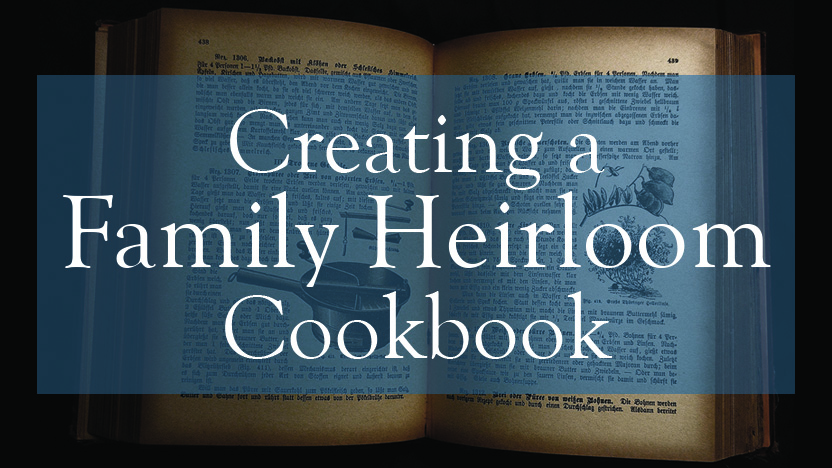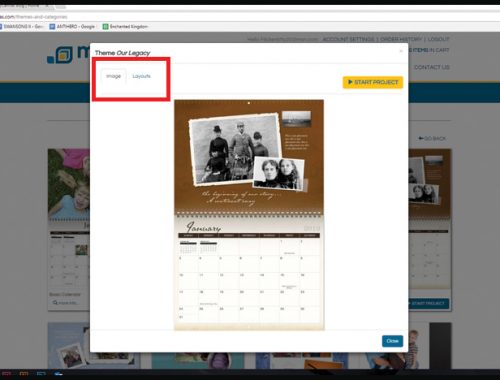Every family has heirlooms and precious family treasures. But some are easier to overlook than others. Recipes and memories of family gatherings fall into this category. Unlike jewelry or knickknacks, these are much more at risk of destruction or fading into oblivion. However, MyCanvas makes it easy to keep your family’s memories safe in an heirloom cookbook.
In the age of Pinterest and email, it may seem easy to hang onto these precious memories via the internet. However, not every recipe can be found on Pinterest–especially your grandmother’s cherry chocolate cake! Also, it can be easy to lose track of individual pins, or their links could break.
Books, however, are far more personal. You can use these beautiful and inventive books to pass on stories and intimate connections between family members. After all, nothing brings a family closer together than food!
Creating Your Family Heirloom Cookbook
There’s nothing quite like reading through an old note card with your grandmother’s handwriting. Many generations before kept recipes this way. However, they might not stand up to the test of time. There may be food stains on the card, or small rips, or it may be damaged.
Your first thought might be to type them up, and discard the paper. In their current form, it might be hard to see the value in old note cards and torn pages. But even with the stains, it’s worth saving your grandmother’s handwriting and her notes in the margins. Scanning these notes and cards will preserve them far longer than the paper will last. The images then gain all their value back again once printed in a sturdy and high-quality book.
Make a list of the most important recipes in your family, like your grandfather’s homemade ice cream, your aunt’s lemon cheesecake bars, and your mother’s dinner rolls. Pick the ones your family just wouldn’t be the same without.
For your first cookbook, 15-20 recipes might be a good start. It takes time to gather recipes from your family members, and a smaller number is easier to take on, especially with a deadline. It will also be easier for photos if you have them, background, and any family stories about the recipe.
Once you have some experience, if you want to expand your repertoire of recipes, you can focus on adding and formatting more recipes into a larger book. You can even try this out for both sides of your family!
More Than Just Recipes
You may be working on a cookbook, but remember: this is also an heirloom for your family members. Even though food is special, your family traditions will stand stronger with stories behind them. Bring your traditions and memories into one special place for future generations to see.
Photos, for example, enhance the look of your book and personalize it further. If you have food photography, this can be handy for knowing what your meal should look like. But more than that, photos of celebrations showcase precious memories, and tell why this recipe is so special.
If you don’t have photos to share for each recipe, tell the stories behind them. You can talk about how everyone looked forward to Christmas, because that was the only time your mother served homemade fudge.
You can also teach about your traditions, and how they got started. These can include holidays or special rituals, as well as simple and everyday moments that turned into traditions.
Or, you can just tell the stories of your family. If your uncle whistled while he baked, put that in! Keep your family members’ quirks, quotes, and lovable moments alive in print. Remember that you’re focusing on memories, rather than simply recipes alone.
Specialized Heirloom Cookbooks
While it’s easy to create a cookbook for the whole family, it’s also fun to create specialized types of books. These can have more practicality, or become important pieces of family history and culture. It’s all up to you!
College Cookbooks
College students move away, but your family doesn’t have to move apart. Giving your young adults an heirloom cookbook before they leave home can create a bond between them and other members of your family.
You could even compile a list of recipes your family used through college and early adulthood years. This goes beyond creating memories and teaching family history. A college cookbook could be an excellent tool to help them save money and time while on their own. You can pass on years of experience at once!
Pioneer/Ancestral Cookbooks
Though rarer, cookbooks with recipes from generations ago will make a unique and interesting resource for your entire family. Telling the stories of your ancestors with food can strengthen a sense of culture, or provide historical insight into their lives. Maybe you’ll even have recipes you still use today that go back decades! You may also learn valuable insights about your genealogy just by searching through records for these kinds of recipes.
It may take some doing, but an heirloom cookbook will benefit your family immensely. Books such as these can teach generations to come about your family history, and establish firm connections to the past. Your children and grandchildren can have easy access to these memories through these books. Through them, you’ll help traditions stay alive for years and years.
MyCanvas offers recipe book themes in three different sizes. Here, you can learn the easy steps for setting up your heirloom cookbook.



